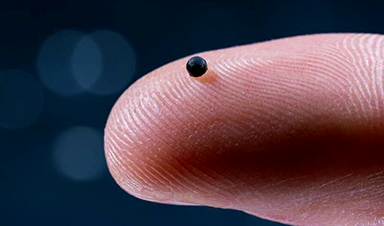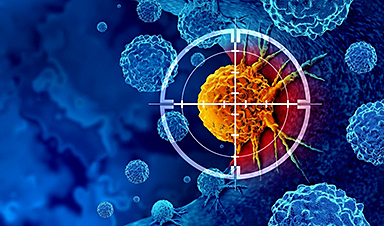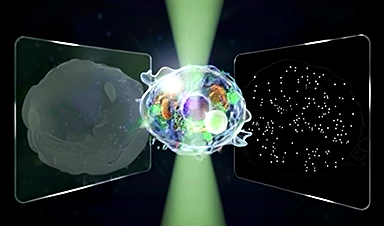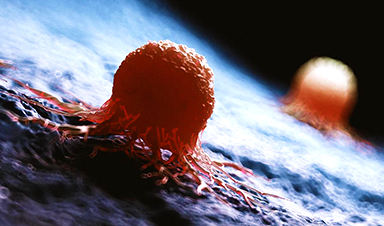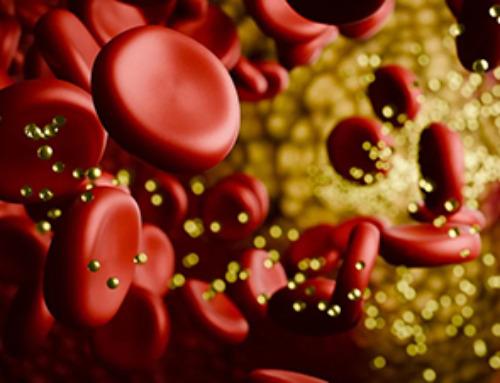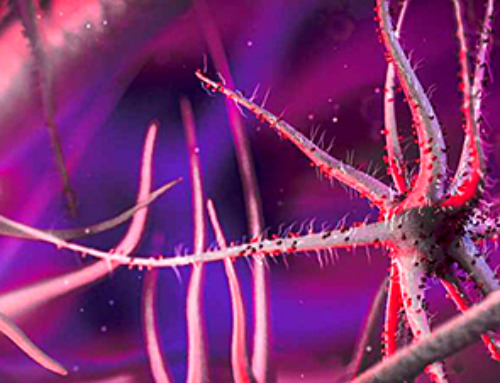Nanoplastics—particles smaller than a human hair—can pass through cell walls and enter the food web. New research suggest 27 million metric tons of nanoplastics are spread across just the top layer of the North Atlantic
By Katharine Sanderson & Nature magazine
Pollution
Marine plastic litter tends to grab headlines, with images of suffocating seabirds or bottles washing up along coastlines. Increasingly, researchers have been finding tiny microplastic fragments across all environments, from the most densely populated cities to pristine mountaintops, as well as in human tissue including the brain and placenta. A study published today reveals yet another hidden source of this deadly waste: nanometre-scale particles are literally everywhere, says co-author Dušan Materić, an environmental analytical chemist at the Helmholtz Centre for Environmental Research in Leipzig, Germany.
Materić and his colleagues sampled water at three depths representative of different environments in the North Atlantic Ocean. Throughout the water column, they found three types of nanoplastic: polyethylene terephthalate (PET), polystyrene (PS) and polyvinylchloride (PVC). These were present at average concentrations of 18 milligrams per metre cubed, which translates to 27 million tonnes of nanoplastics spread across just the top layer of the temperate to subtropical North Atlantic. “Nanoplastics make up the dominant fraction of marine plastic pollution,” Materić says. In the entire world’s oceans, it is estimated that there are around 3 million tonnes of floating plastic pollution — excluding nanoplastics.
What are plastic nanoparticles and how different are they from microplastics?
The tiniest of pieces of plastic, nanoplastics are defined by the researchers as having a diameter of less than one micrometre (one one-thousandth of a metre). Microplastics are between one micrometre and 5 millimetres across. At the smaller scale of nanoplastics, materials behave differently. Materić and his colleagues found that the particles were distributed throughout the water column, rather than settling to the bottom. The movement of the nanoplastic particles was dominated not by gravity, but by the random movement called Brownian motion, and by collisions with water molecules.
How did the team find the nanoplastics?
The scientists took water samples during a November 2020 cruise on research vessel Pelagia, which is owned by the Royal Netherlands Institute of Sea Research in Texel. They sampled at 12 locations: 5 in the system of circular currents called the North Atlantic subtropical gyre; 4 in the open ocean; and 3 from coastal areas on the European continental shelf. At each location, they gathered samples at depths of 10 metres and 1,000 metres below the surface, and then 30 metres off the ocean bottom.
The nanoplastics were detected using a technology called thermal-desorption proton-transfer-reaction mass spectrometry. “We faced multiple challenges,” says Materić, including the need to remove contaminants other than nanoplastics. Each 10-millilitre sample was run through a filter with micrometre pores to clear out microplastics. Samples were then slowly heated, releasing any organic matter and allowing the remaining plastics to be identified.
Not all was as expected. “We faced a big mystery,” says Materić. One major class of plastics, polyethylene (PE), was missing from the data, even though fragments almost certainly enter the ocean. The fragments probably transform into something else, or might fall to the sea bed, says Materić. “This suggests that PE nanoplastic cycling in the ocean environment follows some unusual pathway — either rapid chemical alteration or mineralization, or fast sinking.”
Should we be surprised that nanoplastics are an overlooked source of plastics pollution? Should we be worried?
“This does not come as a surprise to me, as I have been aware of the extent and magnitude of the problem for some time,” says Tony Walker, an environmental scientist at Dalhousie University in Halifax, Canada. “Nanoplastics, unlike microplastics, are able to pass through cell walls, meaning that they are already incorporated into the ocean phytoplankton which serve as the base of the marine food web and are able to be transferred through the marine food web,” he explains.
The ubiquitousness of nanoplastics means they should be taken seriously, says Materić. “Given their toxicological potential, they may represent the most problematic plastic size fraction for ocean life,” he says. Walker agrees: “This should be a wake-up call to all of us,” he says. “The extent to which nanoplastics can infiltrate every ecosystem and living cell on the planet is even far worse than what we already know about microplastics and larger plastic pollution.”
What can be done to mitigate the pollution?
The next and likely final round of negotiations for a legally binding United Nations treaty on plastics pollution will kick off in August in Geneva, Switzerland. On the table is a limit on future plastic manufacture, but this is being resisted by some countries, including those that rely on oil and gas exports to power their economies.
“One of the best strategies to mitigate future nanoplastics pollution or release into the environment is to cap plastic production,” says Walker. “Turn off the tap.”
News
Current Heart Health Guidelines Are Failing To Catch a Deadly Genetic Killer
New research reveals that standard screening misses most people with a common inherited cholesterol disorder. A Mayo Clinic study reports that current genetic screening guidelines overlook most people who have familial hypercholesterolemia, an inherited disorder that [...]
Scientists Identify the Evolutionary “Purpose” of Consciousness
Summary: Researchers at Ruhr University Bochum explore why consciousness evolved and why different species developed it in distinct ways. By comparing humans with birds, they show that complex awareness may arise through different neural architectures yet [...]
Novel mRNA therapy curbs antibiotic-resistant infections in preclinical lung models
Researchers at the Icahn School of Medicine at Mount Sinai and collaborators have reported early success with a novel mRNA-based therapy designed to combat antibiotic-resistant bacteria. The findings, published in Nature Biotechnology, show that in [...]
New skin-permeable polymer delivers insulin without needles
A breakthrough zwitterionic polymer slips through the skin’s toughest barriers, carrying insulin deep into tissue and normalizing blood sugar, offering patients a painless alternative to daily injections. A recent study published in the journal Nature examines [...]
Multifunctional Nanogels: A Breakthrough in Antibacterial Strategies
Antibiotic resistance is a growing concern - from human health to crop survival. A new study successfully uses nanogels to target and almost entirely inhibit the bacteria P. Aeruginosa. Recently published in Angewandte Chemie, the study [...]
Nanoflowers rejuvenate old and damaged human cells by replacing their mitochondria
Biomedical researchers at Texas A&M University may have discovered a way to stop or even reverse the decline of cellular energy production—a finding that could have revolutionary effects across medicine. Dr. Akhilesh K. Gaharwar [...]
The Stunning New Push to Protect the Invisible 99% of Life
Scientists worldwide have joined forces to build the first-ever roadmap for conserving Earth’s vast invisible majority—microbes. Their new IUCN Specialist Group reframes conservation by elevating microbial life to the same urgency as plants and [...]
Scientists Find a Way to Help the Brain Clear Alzheimer’s Plaques Naturally
Scientists have discovered that the brain may have a built-in way to fight Alzheimer’s. By activating a protein called Sox9, researchers were able to switch on star-shaped brain cells known as astrocytes and turn them into [...]
Vision can be rebooted in adults with amblyopia, study suggests
Temporarily anesthetizing the retina briefly reverts the activity of the visual system to that observed in early development and enables growth of responses to the amblyopic eye, new research shows. In the common vision [...]
Ultrasound-activated Nanoparticles Kill Liver Cancer and Activate Immune System
A new ultrasound-guided nanotherapy wipes out liver tumors while training the immune system to keep them from coming back. The study, published in Nano Today, introduces a biodegradable nanoparticle system that combines sonodynamic therapy and cell [...]
Magnetic nanoparticles that successfully navigate complex blood vessels may be ready for clinical trials
Every year, 12 million people worldwide suffer a stroke; many die or are permanently impaired. Currently, drugs are administered to dissolve the thrombus that blocks the blood vessel. These drugs spread throughout the entire [...]
Reviving Exhausted T Cells Sparks Powerful Cancer Tumor Elimination
Scientists have discovered how tumors secretly drain the energy from T cells—the immune system’s main cancer fighters—and how blocking that process can bring them back to life. The team found that cancer cells use [...]
Very low LDL-cholesterol correlates to fewer heart problems after stroke
Brigham and Women's Hospital's TIMI Study Group reports that in patients with prior ischemic stroke, very low achieved LDL-cholesterol correlated with fewer major adverse cardiovascular events and fewer recurrent strokes, without an apparent increase [...]
“Great Unified Microscope” Reveals Hidden Micro and Nano Worlds Inside Living Cells
University of Tokyo researchers have created a powerful new microscope that captures both forward- and back-scattered light at once, letting scientists see everything from large cell structures to tiny nanoscale particles in a single shot. Researchers [...]
Breakthrough Alzheimer’s Drug Has a Hidden Problem
Researchers in Japan found that although the Alzheimer’s drug lecanemab successfully removes amyloid plaques from the brain, it does not restore the brain’s waste-clearing system within the first few months of treatment. The study suggests that [...]
Concerning New Research Reveals Colon Cancer Is Skyrocketing in Adults Under 50
Colorectal cancer is striking younger adults at alarming rates, driven by lifestyle and genetic factors. Colorectal cancer (CRC) develops when abnormal cells grow uncontrollably in the colon or rectum, forming tumors that can eventually [...]











